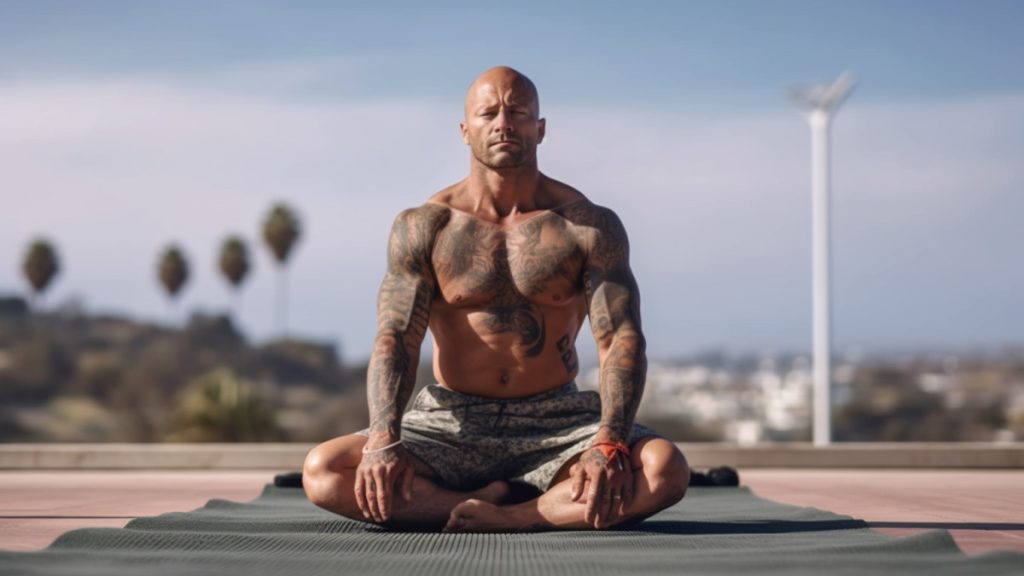Unraveling Peace: A Guide to Using Yoga for Trauma and PTSD

Disclaimer: This article is intended for informational purposes only and should not be used as a substitute for professional medical advice, diagnosis, or treatment. If you are suffering from trauma or PTSD, please consult with a mental health professional. The practice of yoga should be guided by experienced professionals, especially when dealing with mental health challenges.
Table of Contents
Introduction: A Gentle Approach to Healing
Yoga, an ancient practice that combines physical postures, breath control, and meditation, has become a popular practice for those grappling with trauma and PTSD, in part due to the research of Dr. Bessel van der Kolk, psychiatrist and author of The Body Keeps the Score. This practice provides a unique and holistic approach that reaches beyond traditional therapies and is often used in addition to other modalities, such as EMDR or EFT. In this article, we will explore how yoga can specifically benefit those struggling with these serious mental health conditions and offer a few guided “yoga for PTSD and trauma” YouTube workouts.
The above video is just over 5 minutes. In it, Bessel van der Kolk discusses how a steady yoga practice can help you get “unstuck” from the imprints of trauma.
The Connection Between Yoga and Healing
Yoga promotes mindfulness, the ability to focus on the present moment. This kind of awareness can help those with PTSD to dissociate from distressing memories and instead concentrate on their body’s sensations. It encourages a compassionate and nurturing connection to oneself, essential for anyone healing from trauma.
Trauma-Sensitive Yoga: What Is It?
Trauma-sensitive yoga is designed with the unique needs of trauma survivors in mind. It emphasizes creating a safe and supportive environment, allowing individuals to explore their bodies at their own pace. The practice is often gentle and is usually facilitated by a trained and empathetic instructor.
Benefits of Yoga for Trauma and PTSD
- Enhancing Mind-Body Connection: Yoga helps in grounding individuals, allowing them to reconnect with their bodies.
- Reducing Anxiety and Stress: Through controlled breathing and relaxation, yoga helps alleviate stress and anxiety, common symptoms of PTSD.
- Building Resilience and Confidence: Gradual mastery of poses can enhance self-confidence, fostering a greater sense of control and resilience.
Veterans and Yoga for PTSD
This 4-minute video from AARP shares the journey of U.S. Army veteran Jeff Sargent, who fought on the front lines in Afghanastan and Iraq. After retirement, he suffered from PTSD. His initial response was “real men don’t do yoga,” but he gave it a try anyway and now credits yoga with saving his life:
How to Get Started with Yoga for Trauma
For those interested in exploring yoga as a healing tool, it is important to find a class or instructor specializing in trauma-sensitive yoga. Talking to a mental health professional for guidance and taking gentle, beginners’ classes can be a good first step.
Here are a couple of classes from YouTube, although you can search for other classes by typing “yoga for ptsd” in the YouTube search bar.
Breathe & Flow: 30 Minute Trauma and PTSD Informed Yoga Practice
Bre Niedhammer, part of a husband-and-wife YouTube yoga teacher duo, provides this gentle 30-minute trauma and PTSD-informed yoga practice video. You’ll need three pillows and one blanket for this class.
Yoga with Adriene: 45-Minute Yoga for Post Traumatic Stress
For a slightly longer weekend, the ever-popular Yoga with Adriene YouTube channel offers this gentle class.
Adriene writes, “Trauma stays in the body, not just the mind. Our fight or flight response can be disrupted because of traumatic events or experiences. This session invites you to reconnect to your body and tend to the nervous system. Through regular practice, we will rewire our central nervous system to trigger our relaxation response.”
Hannah Uiri: Under 20 Minutes, Trauma Informed Yoga
If you have less time for a yoga session, try Hannah Uiri’s “Trauma Informed Yoga” class on YouTube.
FAQs About Yoga for Trauma and PTSD
Yes, but it is advisable to consult with a professional first, especially when dealing with trauma or PTSD.
Yoga can be an excellent tool, but it is not a one-size-fits-all solution. Individual experiences and needs vary, so professional guidance is essential.
It depends on individual needs and comfort levels. Speaking to a mental health professional and a yoga instructor can help you find the right balance.
Conclusion: A Path Towards Healing
Yoga offers a path towards healing that can be both powerful and gentle. By focusing on the present moment, building connection, and fostering a sense of safety, yoga can provide a supplemental tool to traditional therapies for those coping with trauma and PTSD.
Remember, the journey to recovery is personal, and what works for one individual may not work for another. In addition to yoga, there are other solutions such as taking mushrooms for PTSD, meditation, mindfulness practices, group therapy, and so much more. It’s all about what works best for you. Also, it is always advisable to consult with mental health professionals who understand your unique situation. The blend of professional therapy and guided yoga practice may provide the support and healing you seek.







